The Visegrád Group, Visegrád Four, or V4, is a cultural and political alliance of four Central European countries – the Czech Republic, Hungary, Poland and Slovakia, that are members of the European Union (EU) and NATO – for the purposes of advancing military, cultural, economic and energy cooperation with one another along with furthering their integration in the EU. The Group traces its origins to the summit meetings of leaders from Czechoslovakia, Hungary, and Poland held in the Hungarian castle-town of Visegrád on 15 February 1991. Visegrád was chosen as the location for the 1991 meeting as an intentional allusion to the medieval Congress of Visegrád in 1335 between John I of Bohemia, Charles I of Hungary and Casimir III of Poland. After the dissolution of Czechoslovakia in 1993, the Czech Republic and Slovakia became independent members of the group, thus increasing the number of members from three to four. All four members of the Visegrád Group joined the European Union on 1 May 2004.
- slovakia
- energy cooperation
- visegrád
1. Historical Background
The name of the Group is derived, and the place of meeting selected, from the 1335 Congress of Visegrád held by the Bohemian (Czech), Polish, and Hungarian rulers in Visegrád. Charles I of Hungary, Casimir III of Poland, and John of Bohemia agreed to create new commercial routes to bypass the city of Vienna, a staple port (which required goods to be off-loaded and offered for sale in the city), and to obtain easier access to other European markets. The recognition of Czech sovereignty over the Duchy of Silesia was also confirmed. The second Congress took place in 1339, where it was decided that after the death of Casimir III of Poland, the son of Charles I of Hungary, Louis I of Hungary, would become King of Poland provided that Casimir did not have a son.[1]
From the 1500s, large parts of the present-day countries became part of or were influenced by the Vienna-based Habsburg Monarchy, until after the end of World War I and the dissolution of the Habsburg-ruled Austria-Hungary. After World War II, the countries became satellite states of the Soviet Union as the Polish People's Republic, the Hungarian People's Republic and the Czechoslovak Socialist Republic. In 1989, the Berlin wall was demolished and after the Fall of Communism in Central and Eastern Europe, three countries had abandoned Communism and embraced capitalism and democracy. In December 1991, the Soviet Union collapsed. In between, the Visegrád Group was established on 15 February 1991.[1]
2. Economies
File:Foundation of the Visegrád Group.tiff All four nations in the Visegrád Group are high-income countries with a very high Human Development Index. V4 countries have enjoyed more or less steady economic growth for over a century.[2] In 2009, Slovakia adopted the euro as its official currency and is the only member in the Group to do so.
If counted as a single nation state, the Visegrád Group would be the fifth largest economy in Europe and the 12th largest in the world.[3]
Based on gross domestic product per capita (PPP) estimated figures for the year 2020, the most developed country in the grouping is the Czech Republic (US$40,858 per capita), followed by Slovakia (US$38,321 per capita), Hungary (US$35,941 per capita) and Poland (US$35,651 per capita). The average GDP (PPP) in 2019 for the entire group is estimated at around US$34,865.
Within the EU, the V4 countries are pro-nuclear-power, and are seeking to expand or found (in the case of Poland) a nuclear-power industry. They have sought to counter what they see as an anti-nuclear-power bias within the EU, believing their countries would benefit from nuclear power.[4][5]
2.1. Czech Republic
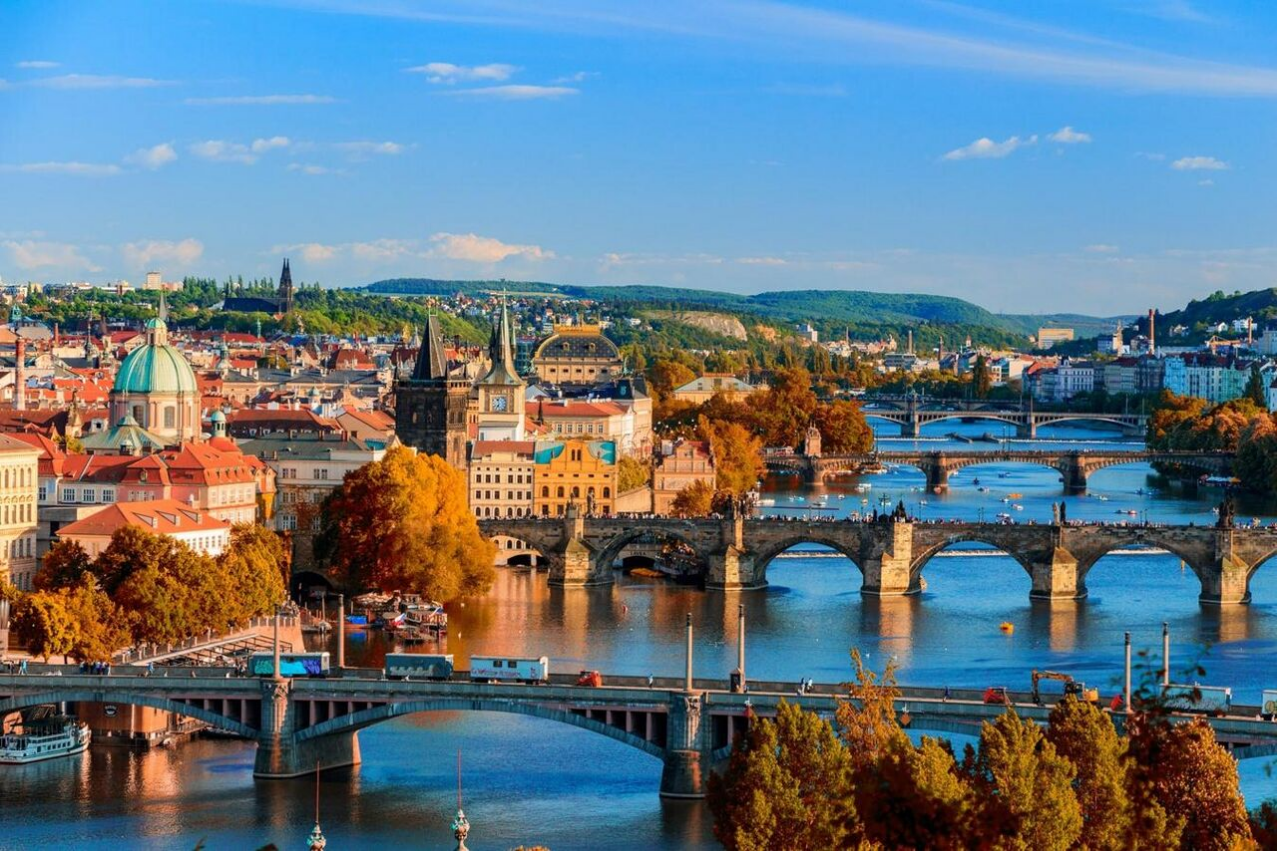
The economy of the Czech Republic is the group's second largest (GDP PPP of US$432.346 billion[6] total, ranked 36th in the world).
Within the V4, the Czech Republic has the highest Human Development Index,[7] Human Capital Index,[8] nominal GDP per capita[9] as well as GDP at purchasing power parity per capita.[10]
2.2. Hungary
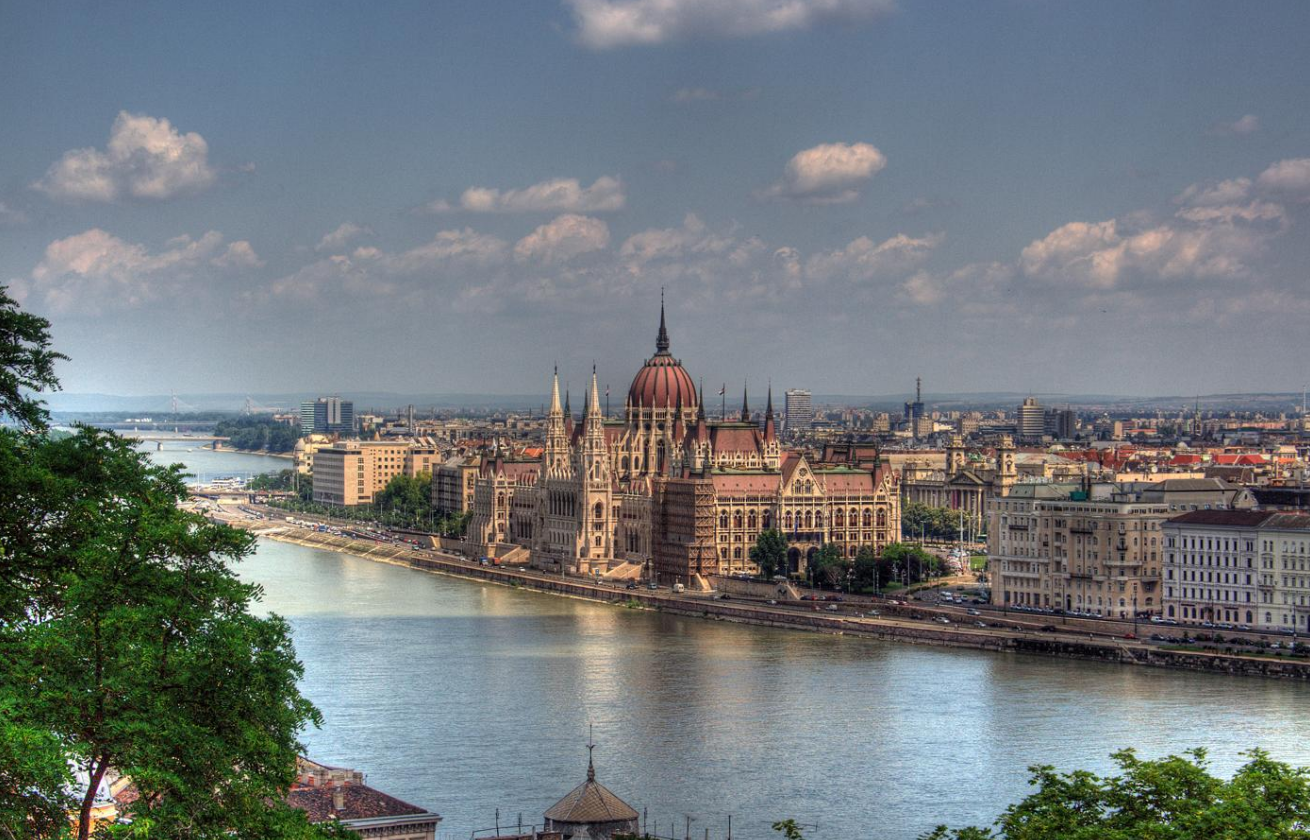
Hungary has the group's third largest economy (total GDP of US$350.000 billion, 53th in the world). Hungary was one of the more developed economies of the Eastern bloc. With about $18 billion in foreign direct investment (FDI) since 1989, Hungary has attracted over one-third of all FDI in central and eastern Europe, including the former Soviet Union. Of this, about $6 billion came from American companies. Now it is an industrial agricultural state. The main industries are engineering, mechanical engineering (cars, buses), chemical, electrical, textile, and food industries. The services sector accounted for 64% of GDP in 2007 and its role in the Hungarian economy is steadily growing.
The main sectors of Hungarian industry are heavy industry (mining, metallurgy, machine and steel production), energy production, mechanical engineering, chemicals, food industry, and automobile production. The industry is leaning mainly on processing industry and (including construction) accounted for 29.32% of GDP in 2008.[11] The leading industry is machinery, followed by the chemical industry (plastic production, pharmaceuticals), while mining, metallurgy and textile industry seemed to be losing importance in the past two decades. In spite of the significant drop in the last decade, the food industry still contributes up to 14% of total industrial production and amounts to 7–8% of the country's exports.[12]
Agriculture accounted for 4.3% of GDP in 2008 and along with the food industry occupied roughly 7.7% of the labor force.[13][14]
Tourism employs nearly 150,000 people and the total income from tourism was 4 billion euros in 2008.[15] One of Hungary's top tourist destinations is Lake Balaton, the largest freshwater lake in Central Europe, with 1.2 million visitors in 2008. The most visited region is Budapest; the Hungarian capital attracted 3.61 million visitors in 2008. Hungary was the world's 24th most visited country in 2011.[16]
2.3. Poland
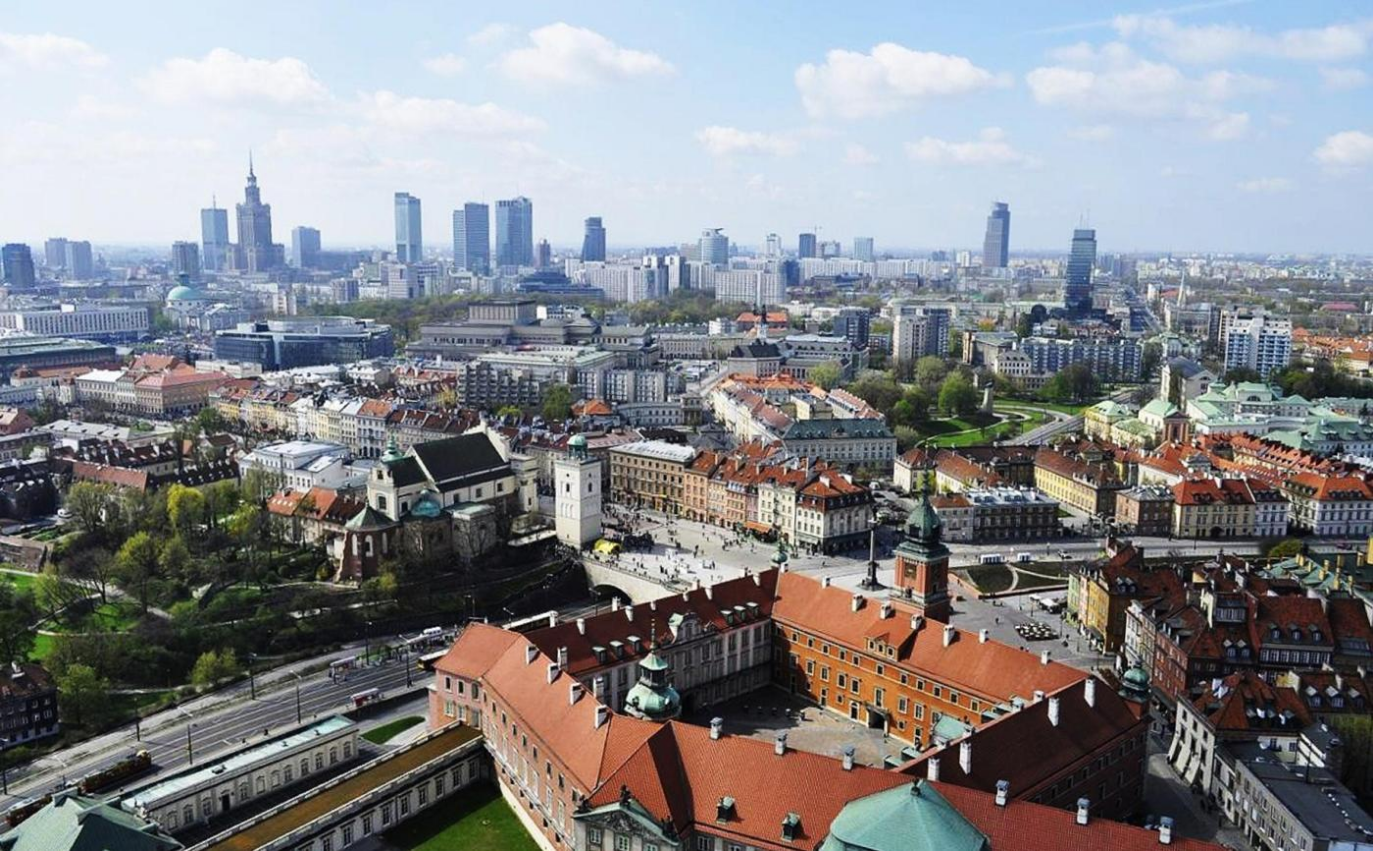
Poland has the region's largest economy (GDP PPP total of US$1.353 trillion,[17] ranked 22nd in the world). According to the United Nations and the World Bank, it is a high-income country[18] with a high quality of life and a very high standard of living.[19][20] The Polish economy is the sixth-largest in the EU and one of the fastest-growing economies in Europe, with a yearly growth rate of over 3.0% before the late-2000s recession. Poland is the only European Union member to have avoided a decline in GDP, and in 2009 created the most GDP growth in the EU. As of December 2009, the Polish economy had not entered recession nor contracted. According to Poland's Central Statistical Office, in 2011 the Polish economic growth rate was 4.3%, the best result in the entire EU. The largest component of its economy is the service sector (67.3%), followed by industry (28.1%) and agriculture (4.6%). Since increased private investment and EU funding assistance, Poland's infrastructure has developed rapidly.
Poland's main industries are mining, machinery (cars, buses, ships), metallurgy, chemicals, electrical goods, textiles, and food processing. The high-technology and IT sectors are also growing with the help of investors such as Google, Toshiba, Dell, GE, LG, and Sharp. Poland is a producer of many electronic devices and components.[21]
2.4. Slovakia
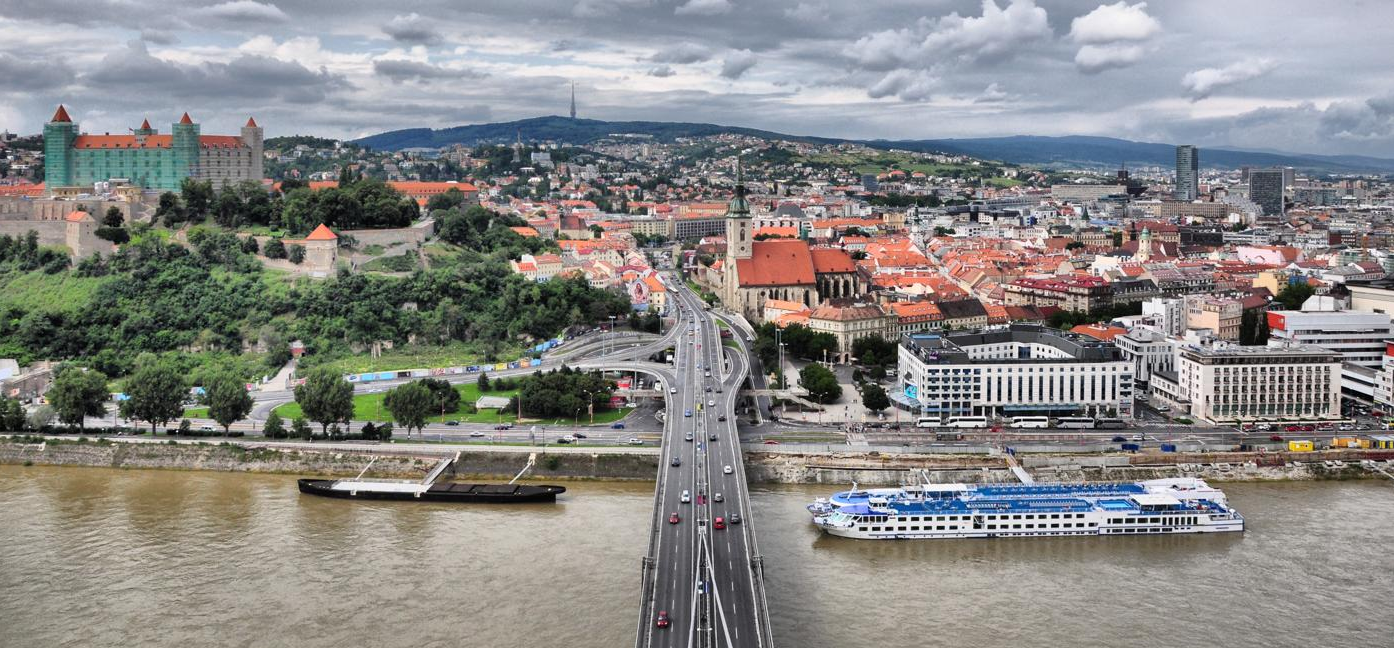
The smallest, but still considerably powerful V4 economy is that of Slovakia (GDP of US$209.186 billion total, 68th in the world).[22]
3. Demographics
The population is 64,301,710 inhabitants, which would rank 22nd largest in the world and 4th in Europe (very similar in size to France, Italy or the UK) if V4 were a single country. Most people live in Poland (38 million),[23] followed by the Czech Republic (nearly 11 million),[24] Hungary (nearly 10 million)[25] and Slovakia (5.5 million).[26]
3.1. V4 Capitals
- Warsaw (Poland) – 1,790,658 inhabitants (metro – 3,105,883)
- Budapest (Hungary) – 1,779,361 inhabitants (metro – 3,303,786)
- Prague (Czech Republic) – 1,318,688 inhabitants (metro – 2,647,308)
- Bratislava (Slovakia) – 432,801 inhabitants (metro – 659,578)
4. Current Leaders
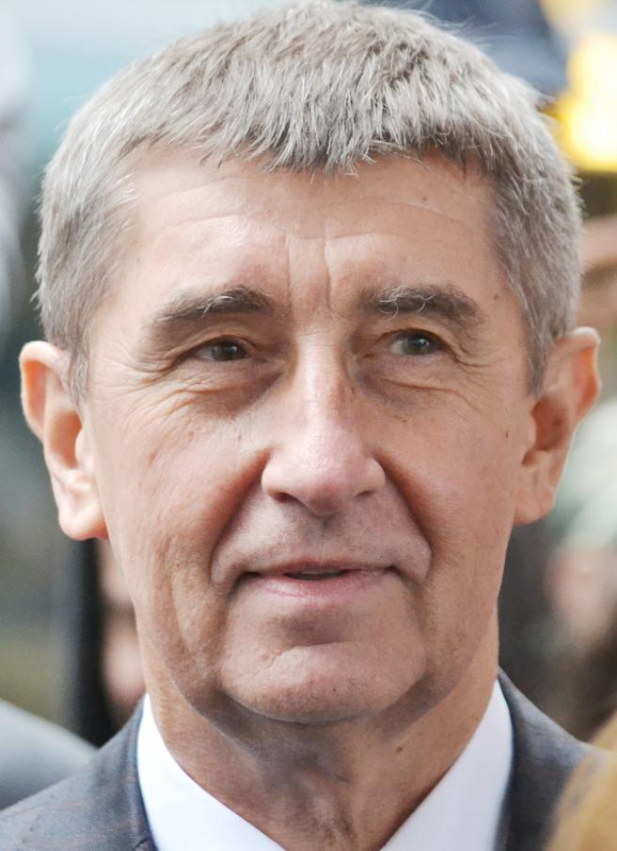
Czech Republic - Andrej Babiš - Prime Minister of the Czech Republic. https://handwiki.org/wiki/index.php?curid=1189532

Hungary - Viktor Orbán - Prime Minister of Hungary. https://handwiki.org/wiki/index.php?curid=1985204

Poland - Mateusz Morawiecki - Prime Minister of Poland. https://handwiki.org/wiki/index.php?curid=1600234
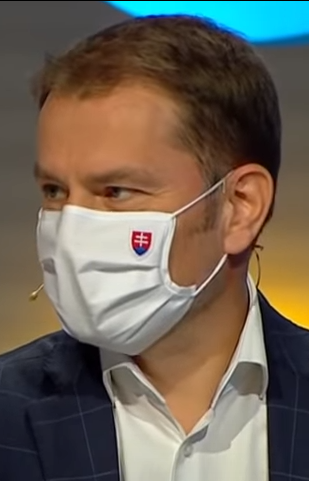
Slovakia - Igor Matovič - Prime Minister of Slovakia. https://handwiki.org/wiki/index.php?curid=1835626
5. Initiatives
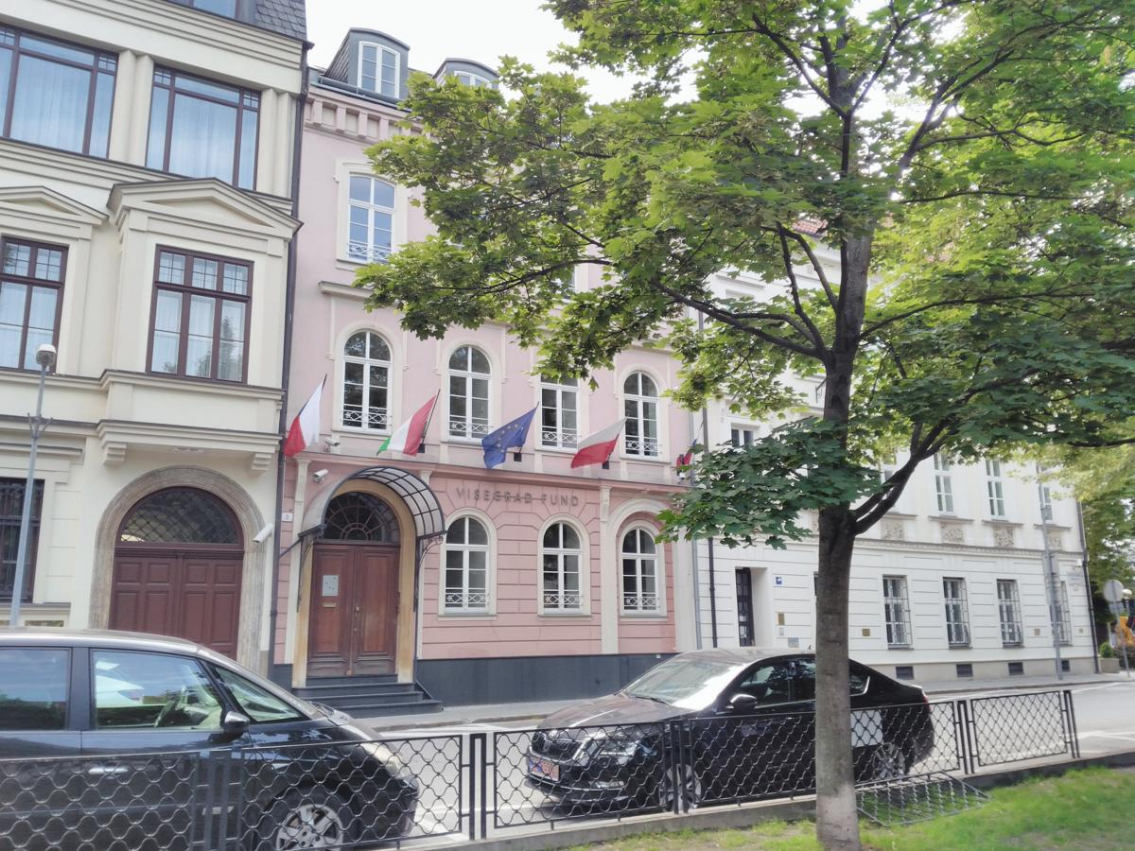
5.1. International Visegrad Fund
The International Visegrad Fund (IVF) is the only institutionalized form of regional cooperation of the Visegrad Group countries.
The main aim of the fund is to strengthen the ties among people and institutions in Central and Eastern Europe through giving support to regional non-governmental initiatives.
5.2. Defence Cooperation
Visegrád Battlegroup
On 12 May 2011, Polish Defence Minister Bogdan Klich said that Poland will lead a new EU Battlegroup of the Visegrád Group. The decision was made at the V4 defence ministers' meeting in Levoča, Slovakia, and the battlegroup became operational and was placed on standby in the first half of 2016. The ministers also agreed that the V4 militaries should hold regular exercises under the auspices of the NATO Response Force, with the first such exercise to be held in Poland in 2013. The battlegroup included members of V4 and Ukraine .[27] Another V4 EU Battlegroup will be formed in the second semester of 2019.[28]
Other cooperation areas
On 14 March 2014, in response to the 2014 Russian military intervention in Ukraine, a pact was signed for a joint military body within the European Union.[29] Subsequent Action Plan defines these other cooperation areas:[30]
- Defence Planning
- Joint Training and Exercises
- Joint Procurement and Defence Industry
- Military Education
- Joint Airspace Protection
- Coordination of Positions
- Communication Strategy
5.3. Visegrad Patent Institute
Created by an agreement signed in Bratislava on 26 February 2015, the Institute aims at operating as an International Searching Authority (ISA) and International Preliminary Examining Authorities (IPEA) under the Patent Cooperation Treaty (PCT) as from 1 July 2016.
6. Neighbor Relations
6.1. European Union
All members of the V4 are Member states of the European Union since the 2004 enlargement of the European Union and are also members of the Schengen Area since 2007.
Austria

Austria is the Visegrád Group's southwestern neighbor. The Czech Republic, Slovakia and Austria launched the Austerlitz format for the three countries in early 2015. The first meeting in this format took place on 29 January 2015 in Slavkov u Brna (Austerlitz) in the Czech Republic. Petr Drulák, the deputy minister of the Czech Republic, emphasized that the Austerlitz format was not a competition, but an addition to the Visegrád group.[31]
The leadership of the Freedom Party of Austria, the junior partner in the former Austrian coalition government, has expressed its willingness to closely cooperate with the Visegrád Group.[32] Chancellor and leader of the Austrian People's Party Sebastian Kurz wants to act as bridge builder between the east and the west.[33]
Germany
Germany, Visegrad Group's western neighbor, is a key economic partner of the group and vice versa. As of 2018, Germany’s trade and investment flows with the V4 are greater than with China.[34]
6.2. Non-EU
Hungary, Poland, and Slovakia border Ukraine on their east. Poland additionally borders Belarus and Russia n Kaliningrad to the northeast. The Czech Republic is fully surrounded by other EU members. Hungary borders Serbia on the south, which is a candidate for EU accession.
Ukraine
Ukraine , an eastern neighbor of the V4 that is not a member of the EU, is one of largest recipients of the International Visegrad Fund support and receives assistance from the Visegrad Group for its aspirations to European integration.[35] Ukraine joined the Deep and Comprehensive Free Trade Area with the EU and therefore with the V4 in 2016.[36]
7. Country Comparison
| Name | Czech Republic | Hungary | Poland | Slovakia | ||||
|---|---|---|---|---|---|---|---|---|
| Official name | Czech Republic (Česká republika) | Hungary (Magyarország) | Republic of Poland (Rzeczpospolita Polska) | Slovak Republic (Slovenská republika) | ||||
| Coat of arms |  |
 |
 |
 |
||||
| Flag |  |
 |
 |
 |
||||
| Population | 10,649,800 (2019)[37] | 9,772,756 (2019)[37] | 37,972,812 (2019)[37] | 5,450,421 (2019)[37] | ||||
| Area | 78,866 km2 (30, 450 sq mi) | 93,028 km2 (35,919 sq mi) | 312,696 km2 (120,733 sq mi) | 49,035 km2 (18,933 sq mi) | ||||
| Population Density | 134/km2 (347.1/sq mi) | 105.9/km2 (274.3/sq mi) | 123/km2 (318.6/sq mi) | 111/km2 (287.5/sq mi) | ||||
| Government | Unitary parliamentary constitutional republic | Unitary parliamentary constitutional republic | Unitary semi-presidential constitutional republic | Unitary parliamentary constitutional republic | ||||
| Capital | Prague – 1,318,688 (2,647,308 Metro) | Budapest – 1,779,361 (3,303,786 Metro) | Warsaw – 1,783,321 (3,100,844 Metro) | Bratislava – 429,564 (659,578 Metro) | ||||
| Largest City | ||||||||
| Official language | Czech (de facto and de jure) | Hungarian (de facto and de jure) | Polish (de facto and de jure) | Slovak (de facto and de jure) | ||||
| First Leader | Bořivoj I, Duke of Bohemia (first historically documented Duke of Bohemia, 867–889) | Grand Prince Árpád (traditional first leader of tribal principality, 895–907)
|
Duke Mieszko I (traditional first leader of unified state, 960–992) | Pribina (traditional ancestor, ?–861) | ||||
| Current Head of Government | Prime Minister Andrej Babiš (ANO 2011; 2017–present) | Prime Minister Viktor Orbán (Fidesz; 1998–2002, 2010–present) | Prime Minister Mateusz Morawiecki (Law and Justice; 2017–present) | Prime Minister Igor Matovič (Ordinary People (Slovakia); 2020–present) | ||||
| Current Head of State | President Miloš Zeman (Party of Civic Rights; 2013–present) | President János Áder (Fidesz; 2012–present) | President Andrzej Duda (Law and Justice; 2015–present) | President Zuzana Čaputová (Progressive Slovakia; 2019–present) | ||||
| Main religions | 44.7% undeclared, 34.5% irreligious, 10.5% Roman Catholic, 2% other Christians, 0.7% others | 38.9% Catholicism (Roman, Greek), 13.8% Protestantism (Reformed, Evangelical), 0.2% Orthodox, 0.1% Jewish, 1.7% other, 16.7% Non-religious, 1.5% Atheism, 27.2% undeclared | 87.58% Roman Catholic, 7.10% Opting out of answer, 1.28% Other faiths, 2.41% Irreligious, 1.63% Not stated | 62% Roman Catholic, 5.9% Evangelical Church of the Augsburg Confession in Slovakia, 3.8% Slovak Greek Catholic Church, 1.8% Reformed churches, 0.9% Czech and Slovak Orthodox Church, 0.3% Jehovah's Witnesses, 0.2% Evangelical Methodist, 10.6% not specified, 13.4% no religion | ||||
| Ethnic groups | 64.3% Czechs, 25.3% unspecified, 5% Moravians, 1.4% Slovaks, 1.0% Ukrainians, 3.0% Other | 83.7% Hungarian, 3.1% Roma, 1.3% German, 14.7% not declared | 98% Poles, 2% other or undeclared | 80.7% Slovaks, 8.5% Hungarians, 2.0% Roma, 0.6% Czechs, 0.6% Rusyns, 0.1% Ukrainians, 0.1% Germans, 0.1% Poles, 0.1% Moravians, 7.2% unspecified | ||||
| GDP (nominal) | ||||||||
| External debt (nominal) | $77.786 billion (2019 Q2) – 31.6 % of GDP | $112.407 billion (2019 Q2) – 66.6 % of GDP | $281.812 billion (2019 Q2) – 47.5 % of GDP | $51.524 billion (2019 Q2) – 46.9 % of GDP | ||||
| GDP (PPP) | ||||||||
| Currency | Czech koruna (Kč) – CZK | Hungarian forint (Ft) – HUF | Polish złoty (zł) – PLN | Euro (€) – EUR | ||||
| Human Development Index |
References
- Szabadság – szabadsag.ro – A visegrádi négyek és az új évezred kihívásai – 19 May 2011 http://archivum2.szabadsag.ro/szabadsag/servlet/szabadsag/template/print,PrintScreen.vm/id/58129/mainarticle/false
- "Aggregate And Per Capita GDP in Europe, 1870–2000: Continental, Regional and National Data With Changing Boundaries, Stephen Broadberry University of Warwick". 27 October 2011. http://dev3.cepr.org/meets/wkcn/1/1699/papers/Broadberry_Klein.pdf. Retrieved 7 September 2013.
- European Union. "The Visegrád Group – Growth Engine of Europe", international conference Speech by Johannes Hahn, Commissioner for Regional Policy. Budapest: 24 June 2014 http://ec.europa.eu/regional_policy/upload/documents/Commissioner/Speech-Visegrad-4-Ministerial-meeting-on-Cohesion_24062014.pdf
- "Visegrád group backs nuclear energy". China.org.cn. 14 October 2013. http://www.china.org.cn/world/Off_the_Wire/2013-10/14/content_30291509.htm. Retrieved 1 May 2016.
- "Don't impede our nuclear, V4 tells EU". World-nuclear-news.org. 15 October 2013. http://www.world-nuclear-news.org/NP-Dont_impede_our_nuclear_V4_tells_EU-1510138.html. Retrieved 1 May 2016.
- "V4". International Monetary Fund. https://www.imf.org/external/pubs/ft/weo/2019/02/weodata/weorept.aspx?pr.x=36&pr.y=17&sy=2017&ey=2021&scsm=1&ssd=1&sort=country&ds=.&br=1&c=935&s=NGDPD%2CPPPGDP%2CNGDPDPC%2CPPPPC&grp=0&a=. Retrieved 17 October 2019.
- "Human Development Report 2019 – "Beyond income, beyond averages, beyond today: Inequalities in human development in the 21st century"". HDRO (Human Development Report Office) United Nations Development Programme. pp. 22–25. http://www.hdr.undp.org/sites/default/files/hdr2019.pdf. Retrieved 9 December 2019.
- "Human Capital Index 2018". https://openknowledge.worldbank.org/bitstream/handle/10986/30498/33252.pdf?sequence=5&isAllowed=y.
- "World Economic Outlook Database, October 2019". World Economic Outlook. International Monetary Fund. October 2019. https://www.imf.org/external/pubs/ft/weo/2019/02/weodata/weorept.aspx?pr.x=50&pr.y=11&sy=2019&ey=2019&scsm=1&ssd=1&sort=country&ds=.&br=1&c=512%2C668%2C914%2C672%2C612%2C946%2C614%2C137%2C311%2C546%2C213%2C674%2C911%2C676%2C314%2C548%2C193%2C556%2C122%2C678%2C912%2C181%2C313%2C867%2C419%2C682%2C513%2C684%2C316%2C273%2C913%2C868%2C124%2C921%2C339%2C948%2C638%2C943%2C514%2C686%2C218%2C688%2C963%2C518%2C616%2C728%2C223%2C836%2C516%2C558%2C918%2C138%2C748%2C196%2C618%2C278%2C624%2C692%2C522%2C694%2C622%2C962%2C156%2C142%2C626%2C449%2C628%2C564%2C228%2C565%2C924%2C283%2C233%2C853%2C632%2C288%2C636%2C293%2C634%2C566%2C238%2C964%2C662%2C182%2C960%2C359%2C423%2C453%2C935%2C968%2C128%2C922%2C611%2C714%2C321%2C862%2C243%2C135%2C248%2C716%2C469%2C456%2C253%2C722%2C642%2C942%2C643%2C718%2C939%2C724%2C734%2C576%2C644%2C936%2C819%2C961%2C172%2C813%2C132%2C726%2C646%2C199%2C648%2C733%2C915%2C184%2C134%2C524%2C652%2C361%2C174%2C362%2C328%2C364%2C258%2C732%2C656%2C366%2C654%2C144%2C336%2C146%2C263%2C463%2C268%2C528%2C532%2C923%2C944%2C738%2C176%2C578%2C534%2C537%2C536%2C742%2C429%2C866%2C433%2C369%2C178%2C744%2C436%2C186%2C136%2C925%2C343%2C869%2C158%2C746%2C439%2C926%2C916%2C466%2C664%2C112%2C826%2C111%2C542%2C298%2C967%2C927%2C443%2C846%2C917%2C299%2C544%2C582%2C941%2C474%2C446%2C754%2C666%2C698&s=NGDPDPC&grp=0&a=. Retrieved 1 January 2020.
- World Economic Outlook Database, April 2019, International Monetary Fund. Database updated in April 2019. Retrieved 12 April 2019. https://www.imf.org/external/pubs/ft/weo/2019/01/weodata/weorept.aspx?sy=2018&ey=2018&scsm=1&ssd=1&sort=country&ds=.&br=1&pr1.x=55&pr1.y=9&c=512%2C946%2C914%2C137%2C612%2C546%2C614%2C962%2C311%2C674%2C213%2C676%2C911%2C548%2C193%2C556%2C122%2C678%2C912%2C181%2C313%2C867%2C419%2C682%2C513%2C684%2C316%2C273%2C913%2C868%2C124%2C921%2C339%2C948%2C638%2C943%2C514%2C686%2C218%2C688%2C963%2C518%2C616%2C728%2C223%2C836%2C516%2C558%2C918%2C138%2C748%2C196%2C618%2C278%2C624%2C692%2C522%2C694%2C622%2C142%2C156%2C449%2C626%2C564%2C628%2C565%2C228%2C283%2C924%2C853%2C233%2C288%2C632%2C293%2C636%2C566%2C634%2C964%2C238%2C182%2C662%2C359%2C960%2C453%2C423%2C968%2C935%2C922%2C128%2C714%2C611%2C862%2C321%2C135%2C243%2C716%2C248%2C456%2C469%2C722%2C253%2C942%2C642%2C718%2C643%2C724%2C939%2C576%2C644%2C936%2C819%2C961%2C172%2C813%2C132%2C726%2C646%2C199%2C648%2C733%2C915%2C184%2C134%2C524%2C652%2C361%2C174%2C362%2C328%2C364%2C258%2C732%2C656%2C366%2C654%2C734%2C336%2C144%2C263%2C146%2C268%2C463%2C532%2C528%2C944%2C923%2C176%2C738%2C534%2C578%2C536%2C537%2C429%2C742%2C433%2C866%2C178%2C369%2C436%2C744%2C136%2C186%2C343%2C925%2C158%2C869%2C439%2C746%2C916%2C926%2C664%2C466%2C826%2C112%2C542%2C111%2C967%2C298%2C443%2C927%2C917%2C846%2C544%2C299%2C941%2C582%2C446%2C474%2C666%2C754%2C668%2C698%2C672&s=PPPPC&grp=0&a=
- "Elemzői reakciók az ipari termelési adatra (Analysts' Reaction on Industrial Production Data)" (in Hungarian). 7 April 2009. http://www.profitline.hu/index.php/hircentrum/hir/130567/link5. Retrieved 18 January 2010.
- "Food Industry". http://www.itdh.com/engine.aspx?page=Trade_Food_Industry. Retrieved 18 January 2010.
- "Value and distribution of gross value added by industries". Hungarian Central Statistical Office. 2009. http://portal.ksh.hu/pls/ksh/docs/eng/xstadat/xstadat_annual/tabl3_01_02iec.html. Retrieved 31 December 2009.
- "Number of employed persons by industries". Hungarian Central Statistical Office. 2009. http://portal.ksh.hu/pls/ksh/docs/eng/xstadat/xstadat_annual/tabl2_01_04iea.html. Retrieved 31 December 2009.
- "Táblamelléklet (Tables)". Hungarian Central Statistical Office. http://portal.ksh.hu/pls/ksh/docs/hun/xftp/idoszaki/jeltur/jeltur08t.pdf. Retrieved 18 January 2010.
- "UNWTO World Tourism Barometer". World Tourism Organisation. January 2013. Archived from the original on 19 August 2008. https://web.archive.org/web/20080819191518/http://www.tourismroi.com/Content_Attachments/27670/File_633513750035785076.pdf. Retrieved 3 January 2013.
- "Report for Selected Countries and Subjects". http://www.imf.org/external/pubs/ft/weo/2018/01/weodata/weorept.aspx?sy=2017&ey=2020&scsm=1&ssd=1&sort=country&ds=.&br=1&pr1.x=48&pr1.y=12&c=964&s=NGDP_RPCH%2CNGDPD%2CPPPGDP%2CNGDPDPC%2CPPPPC&grp=0&a=.
- "Country and Lending Groups | Data". World Bank. http://data.worldbank.org/about/country-classifications/country-and-lending-groups#High_income. Retrieved 9 November 2010.
- "SPI PROGRESS INDEX 2015". Archived from the original on 17 December 2015. https://web.archive.org/web/20151217230131/http://www.socialprogressimperative.org/data/spi. Retrieved 16 December 2015.
- "Quality of Life Index by Country 2017 Mid-Year". http://www.numbeo.com/quality-of-life/rankings_by_country.jsp. Retrieved 1 October 2017.
- Toshiba Invests in a Subsidiary of LG.Philips LCD in Poland. eCoustics.com (10 October 2006). Retrieved 19 July 2013. http://www.ecoustics.com/electronics/products/new/277485.html
- "IMF – International Monetary Fund Home Page". http://www.imf.org/external/index.htm.
- "Wayback Machine". 16 January 2013. Archived from the original on 16 January 2013. https://web.archive.org/web/20130116214520/http://www.stat.gov.pl/cps/rde/xbcr/gus/PUBL_lu_nps2011_wyniki_nsp2011_22032012.pdf. Retrieved 1 October 2017.
- "Czech Republic Population 2016". World Population Review. http://worldpopulationreview.com/countries/czech-republic-population/. Retrieved 1 May 2016.
- "2011. ÉVI NÉPSZÁMLÁLÁS : 3. Országos adatok". http://www.ksh.hu/docs/hun/xftp/idoszaki/nepsz2011/nepsz_orsz_2011.pdf. Retrieved 1 October 2017.
- "Archived copy". Archived from the original on 5 March 2016. https://web.archive.org/web/20160305121029/https://slovak.statistics.sk/wps/wcm/connect/1f62189f-cc70-454d-9eab-17bdf5e1dc4a/Tab_10_Obyvatelstvo_SR_podla_narodnosti_scitanie_2011_2001_1991.pdf?MOD=AJPERES. Retrieved 21 February 2016.
- Visegrad grounds of Ukraine. Mirror Weekly. 13 May 2011 (in Ukrainian) http://gazeta.dt.ua/POLITICS/vishegradskiy_maydanchik_ukrayini.html
- "Bratislava Declaration of the Visegrád Group Heads of Government on the Deepening V4 Defence Cooperation". Visegradgroup.eu. Visegrád Group. 9 December 2015. http://www.visegradgroup.eu/calendar/2014/bratislava-declaration. Retrieved 10 July 2015.
- "Today's Stock Market News and Analysis". NASDAQ. http://www.nasdaq.com/article/visegrad-four-countries-sign-military-pact-20140314-00126. Retrieved 1 May 2016.
- "Visegrad Group Defence Cooperation". 9 December 2014. http://www.visegradgroup.eu/about/cooperation/visegrad-group-defence. Retrieved 30 October 2017.
- Schubert, Gerald (11 April 2015). "Österreich, Tschechien, Slowakei: Gemeinsame Politik im Austerlitz-Format" (in de). Der Standard. http://derstandard.at/2000015574633/Oesterreich-Tschechien-Slowakei-Gemeinsame-Politik-im-Austerlitz-Format.
- Stephan Löwenstein. Zwischen Wien und Budapest. Frankfurter Allgemeine Zeitung Published on 15 October 2017. https://www.faz.net/aktuell/politik/ausland/fpoe-will-oesterreich-in-die-visegrad-gruppe-bringen-15245016.html
- Alexe, Dan (1 February 2018). "Kurz and Orban want to clip Brussels' power, but Austria will not join Visegrad Four". New Europe. https://www.neweurope.eu/article/kurz-and-orban-want-to-limit-the-security-competences-of-brussels-but-austria-will-not-join-visegrad-group/. Retrieved 2 February 2018.
- Germany’s troubled relations with the Visegrad states show the limits to its power. The Economist. 14 June 2018. https://www.economist.com/europe/2018/06/14/germanys-troubled-relations-with-the-visegrad-states-show-the-limits-to-its-power
- Claudia Patricolo. Ukraine looks to revive V4 membership hopes as Slovakia takes over presidency. emerging-europe.com. 29 July 2018. https://emerging-europe.com/in-brief/ukraine-looks-to-revive-v4-membership-hopes-as-slovakia-takes-over-presidency/
- EU-Ukraine free trade 'set for 2016' – President Poroshenko. BBC News. 17 November 2015. https://www.bbc.com/news/world-europe-34842246
- "Population on 1 January". Eurostat. https://ec.europa.eu/eurostat/tgm/table.do?tab=table&init=1&language=en&pcode=tps00001&plugin=1.
